review If you’re one of the minority of people who still want a hardware keyboard on a smartphone, then you very likely already know that the BlackBerry Q10 is right at the top of its class. And with the BlackBerry 10 operating system on board, the Q10 (at least on paper) comes well-equipped with modern software capabilities. But is this objectively, actually, a good smartphone? Do you need a hardware keyboard in 2013? Read on to find out.
Note: Sections of this article are largely identical to our previous preview of the Q10. If you’ve read that article and are only interested in how the Q10 performs in the wild, we recommend you skip the ‘Design’ and ‘Features’ sections and skip to ‘Performance’.
Design
If the Z10 (see our review here) is BlackBerry’s attempt at taking on the smartphone world currently dominated by Apple and its Android rivals, then the Q10 is the company’s ode to its roots. The overall design of the Q10 will be very familiar to anyone who’s used a BlackBerry handset over the past decade.
You get the same squarish oblong black rectangle (it also comes in white) in the Q10’s design as previous BlackBerrys with physical keyboards, with the same heavily rounded corners. The same discrete keys sit below the moderately sized screen (which is squarish, and will look a little odd to many of those who have migrated into the new smartphone reality of long rectangular touchscreens). The same hard black plastic sits on the front of the Q10’s casing, and its back is composed of a soft, leathery substance not unlike the back of Google’s popular Nexus 7 model.
The Q10’s main camera is on the back at the top-left, and there’s a smaller front-facing camera above the screen, next to a decently sized speaker. On the right-hand side of the model, you get a volume rocker, and on top the 3.5mm headphone jack. You also get the normal charging/synching port on the left, and the Q10 also comes with a micro HDMI port for outputting its display to a television or projector. The model measures 119.6 by 66.8mm, and it’s 109.35mm thick. It has a moderate weight of 139g.
Overall the Q10 is pretty much what you would expect from BlackBerry, design-wise, in a model which is no doubt supposed to appeal to the rapidly diminishing segment of the smartphone market which still prefers a physical keyboard. It is quite stylish and will also easy to slip into a jacket or trouser pocket.
However, what’s also important to note here is that the Q10 represents the absolute pinnacle of BlackBerry achievement in the design of its long-running hardware keyboard line. Holding the Q10 in your hand, you’re suddenly reminded of why so many people switched to BlackBerry in the first place. The Q10’s size (absolutely perfect for one hand), its lovely curvy shape (which make it sit perfectly in the hand), its awesome materials, including that svelte back and high-quality plastic, and its very high build quality, combine to make this a fantastic model in the hand. It’s just comfortable in a way that many larger, thinner, heavier, less well-designed phones aren’t, and we liked holding the Q10 and fondling it. BlackBerry does physical design very, very well, and the Q10 is a standout example of its craft.
Features
Overall, the features of the BlackBerry Q10 are standard for a high-end smartphone in mid 2013, but not standout. They are also quite similar to its fully touch-enabled sibling smartphone, the Z10.
The model’s processor is a dual-core, 1.5GHz Qualcomm Snapdragon S4 Plus model and its Super AMOLED touchscreen is on the small side (due to the physical keyboard) at 3.1″ but still has a decent resolution of 720×720 at 330PPI. The main rear camera is a now industry standard eight megapixel model which can shoot 1080p HD video, its front-facing camera is a two megapixel model which can shoot 720p HD, and yes, it has a microSD slot that can take up to 64GB SD cards.
The Q10 comes with 2GB of RAM, 16GB of on-board internal storage, and support for the normal 802.11 a/b/g/n Wi-Fi standards (including 2.4 and 5GHz). Its battery is a 2100mAh removable model, and you get NFC, microUSB, microHDMI out, BlueTooth 4.0, and support for the 4G/LTE specification.
Of course, the real attraction to the Q10, as with the Z10, is the fact that it features version 10 of BlackBerry’s operating system. To say that this is a platform which has been rewritten from the ground up is probably an understatement. The user interface for the platform has been completely revamped and is now quite reminiscent of the iOS or Android operating systems which we all know and love.
It features most of the same concepts (including an extensive app store) as iOS and Android, but it also appears to be a bit more dynamic in its approach; not unlike the way Microsoft’s Windows Phone user interface can be quite fluid. It also places a heavy focus on communications through the dedicated BlackBerry Hub feature; allowing you to receive all of your email from multiple accounts, text messages, social networking mentions and so on, all in one place. And there is also the ability to run Android applications through an included compatibility mode.
PCWorld reported from the Australian launch of the Z10 and Q10 several months ago that a number of local Australian apps have been developed for BlackBerry 10, including from companies like Event Cinemas, goCatch, Fox Sports, Quickflix and Fairfax.
To sum up the Q10’s featureset, what you’re getting here is a smartphone which has virtually all of the specifications of other top-end modern smartphones in mid-2013 (and some which many don’t), but in a modified form factor with a smaller screen to fit in a physical keyboard for BlackBerry traditionalists. The Q10 is essentially the Z10, but with a physical keyboard.
Performance
There are probably three key aspects to the Q10’s performance which you’re interested in — hardware, software, and camera. Firstly, let’s get stuck into the operating system performance. Much of this content comes from our Z10 review, but there are also some elements specific to the Q10.
The first thing which will probably strike you about the OS as delivered in the Q10 is how much of a direct clone of Apple’s iOS it appears to be. You get the same rows of icons, the same battery, wireless, time and 3G/4G signal indicators at the top of the screen, and the same dynamic when switching between different screens of icons on your home screen.
Inputting text is similar, installing apps is similar, and even many of the individual apps which BlackBerry has developed itself or has preinstalled on the Q10 for you are similar. All in all, personally, I really feel as though BlackBerry has made an out-and-out effort here to directly rip off many of the core features of iOS with BlackBerry 10, and it’s done it in a way which is much more blatant than Android or Windows Phone did. There’s less customisation around those original iPhone features than you’ll see in other operating systems.
Android may function very similarly to iOS, but when you get a bit deeper you start to realise that they are fundamentally different operating systems under the hood. There are just so many little differences in the user interface between the two dominant players that you are always aware you’re not using iOS when you have an Android phone. And of course, Windows Phone has a radically different UI paradigm to iOS (a modern modern UI, some would say). In comparison, BlackBerry 10 looks and feels incredibly similar to iOS.
There are some differences in the way you use BlackBerry 10 compared to iOS or Android, however. For starters, swiping to the left-most screen gets you into your message centre (BlackBerry Hub), which centralises incoming messages from a variety of services such as email accounts, SMS, Facebook, Twitter, Google Talk and even phone calls and BlackBerry Messenger messages. It’s got some bugs and UI quirks, but overall we found BlackBerry Hub a really quick and useful way to get access to all incoming communication at the same time.
Then there’s how you deal with open applications. Once you open an app, it’ll look and feel pretty much like an open app on iOS or Android. However, switching apps is more dynamic than on iOS. You can swipe up from the bottom of the screen to get into a kind of window manager mode where you can see open apps and switch between them and close them. We really liked this feature; it’s something Apple doesn’t do a good job of, and it’s a reminder that physical and even capacitive buttons on smartphones are not truly necessary any more.
BlackBerry 10 also steals some ideas from Android. There’s often a ‘back’ button on screen, for instance, which is very useful in getting back to the previous screen before the current one.
In terms of the included functionality which you get with the Q10, pretty much everything is here. You get all the normal smartphone functionality — email/unified messaging, phone functionality, web browsing, mapping, camera, music and video playing, weather apps, a dedicated app store for third-party software and so on. Just like iOS and Android, if you can think of a basic feature which a modern smartphone operating system has, BlackBerry OS will have it as well. It’s all broadly quite functional, and sometimes it even looks great — for example, we love the Q10′s lock screen, with the detailed information it presents, and the lovely way it flows up to reveal your home screen as you swipe the Q10 open.
There are some caveats to this situation, however.
Firstly, you need to be aware that although the hero apps (phone, email, SMS, mapping etc) work really well, once you get beyond those apps into the guts of BlackBerry 10, it’s pretty raw. There are plenty of little bugs and user interface inconsistencies here which make it very clear that this is an early stage smartphone operating system. Just like iOS and Android in the early years, time and time again you’ll be left wondering … ‘why did they do that that way’?
To illustrate a few examples: The ‘back’ button and other menus don’t always appear in BlackBerry 10 when you need them, the settings page is horrendously complex and often the experience of using even a first-party app just feels a little it’s divorced from the main operating system user interface. Many things aren’t consistent, and you sometimes have to hunt around to do what should be obvious.
Secondly, the third-party app ecosystem is abysmal. A quick browse through the BlackBerry World app store makes it clear that while BlackBerry has done an admirable job of making sure that some of the most popular enterprise apps are available and featured right up-front, the depth is only skin-deep. When you start searching for the kind of popular third-party apps which you find on iOS and Android (for example, our go-to for e-reading, Amazon Kindle), you’ll find that they’re usually just not available. The paucity and poor quality in general of BlackBerry World apps is readily apparent.
Sure, you can also install native Android apps — and on paper, this feature should broaden the Q10′s appeal a great deal. However, those apps run in a rather dated version of Android which doesn’t integrate with the rest of BlackBerry 10, meaning it feels like you’re running an emulated version of an app on your smartphone. Not ideal … and the performance isn’t fantastic.
What you’re left with after you take these issues into consideration is a modern smartphone operating system which has promise, and one that can actually be used for most tasks in the real world pretty well. However, BlackBerry 10 just doesn’t match up to iOS and Android right now, and I would say it’s probably not even on par with Windows Phone 8. It needs a lot more development, including third-party app development.
One thing which BlackBerry 10 does do relatively well is integrate with the Q10’s hardware keyboard for actual typing. Although the operating system was clearly designed with a software keyboard experience in mind (as per the Z10), BlackBerry has been able to pretty seamlessly modify the experience so that everywhere you would normally think about hitting a software key to type, with the Q10 you hit a hardware key. It works well, and you probably won’t find yourself missing the software keyboard for typing after a while — especially once you realise how the lovely tactile feel of the Q10’s keyboard makes it easy to quickly knock out words.
However, for other purposes than typing, such as navigation, the Q10’s keyboard is not integrated as well with BlackBerry 10. The problem here is the smaller screen. You still get the same swipe gestures (up from the bottom, for example) as you do with the Z10, and you still get the same on-screen keys (for example, the back key). But because the Q10’s screen is so much smaller than that of the Z10 (or, really, any other modern smartphone) and positioned above a hardware keyboard, if you want to hit these on-screen keys, you need to reach across the physical keyboard with your fingers, or swipe up from it, for example. And sometimes the touchscreen motions just don’t quite work.
This ‘half-in, half-out’ experience really emphasises why Steve Jobs was so anti-hardware keyboards when the iPhone, with its revolutionary software keyboard (quickly adopted by the Android and Windows Phone communities, as well as BlackBerry itself on the Z10) was being developed. At the time, Jobs told his team that if Apple could work out an on-screen keyboard, it could then use that larger screen real estate for other purposes as well.
Retrofitting a touchscreen and BlackBerry 10’s touchscreen features into the hardware keyboard paradigm of the Q10 just feels clunky. Sometimes you need to use the phone’s keyboard, while sometimes you need to use its touchscreen. And each one constantly gets in the way of the other.
If you do a stack of typing and are used to a hardware keyboard, then you’ll love how the Q10 works. But if you’re coming to the phone from a software keyboard world, as I was, you’ll find the hardware keyboard great, but the wider software/hardware integration paradigm on the Q10 quite offputting.
While we’re on that keyboard, let’s say a little about it, and the Q10’s build quality in general. The keyboard is just great. It’s the best smartphone hardware keyboard of any type that we’ve ever used, and great to type on. It’ll also fit fingers from small to large without much of a problem, due to the little tactile indicators built into the keys, and it can easily be operated in one hand.
The hardware quality, and its integrated nature, of the Q10, is also great. It all comes together in the hand in a delightful way. This is a precisely engineered smartphone, following on from decades of similar BlackBerry smartphones, and BlackBerry really knows how to do hardware well. Battery life is also quite good, and we didn’t notice any issues with it running out sooner than we expected. The smaller screen and hardware keyboard mean you’ll likely get an easy few days from the Q10’s battery before needing to recharge.
Lastly, there’s the Q10’s camera. To put it bluntly, it does the job, but there are plenty of better models out there. We took the following shots in the same place at the same time, and cropped them in Photoshop. They’ve been compressed only slightly to JPG format — and all at the same quality. Out of the four, we’d probably say the iPhone 5, Nexus 4 and Xperia Z all took fairly similar good shots, while the colour in the Q10’s shot was out.
BlackBerry Q10:
Sony Xperia Z:
Google Nexus 4:
Apple iPhone 5:
When it comes to its performance, the Q10 is completely a mixed bag. To sum up: The BlackBerry 10 operating system it runs is clearly the best BlackBerry platform we’ve ever used, but it still needs work, it’s still sub-par compared with iOS, Android or even Windows Phone 8, and it doesn’t work as well on the Q10’s smaller, square screen as it does on the Z10’s more normal widescreen size. But that keyboard is still awesome, and so is the Q10’s overall hardware build quality. If the phone’s software was better (say, for example, if it ran Android), this would be a kickass hardware keyboard model which might even lure some back from the software keyboard world.
Conclusion
Look, we’re just going to say it. If you are one of those people who want a physical keyboard on a phone, then this is 100 percent going to be the model for you. There just aren’t many other models at all out there which offer this as a feature, and BlackBerry does it best. Plus, you’ll get features and likely performance in most ways as good as other high-end smartphones in mid-2013 and even a decent camera. Praise BlackBerry for being so committed to physical keyboard in an age where almost every other manufacturer has dropped them.
For everyone else, let’s face it: Why bother? The software keyboards on iOS, Android and Windows Phone are awesome, and we’re sure most people vastly prefer using them over physical keyboards at this point, especially when you consider the additional screen real estate you get with the package. The Q10 is a specialist phone for specialist needs; you know what this model is for and it’s probably not for most people. It is pretty good at what it does and its build quality, especially the keyboard, is awesome; but it’s also likely that you won’t need a physical phone keyboard in your life any time soon.
We love this phone’s hardware and its physical keyboard. But we don’t love its software. Is it time for BlackBerry to ditch its own in-house software development team and go to Android? Based on the Q10, we’d have to say “yes”. A rollout of stock Android (AKA the ‘Nexus’ experience) on this model would make it substantially better. Of course, we’re not going to see that any time soon, because BlackBerry wants to differentiate itself from the horde of other Android wannabes. But it’s a pity. Because with stock Android, the Q10 could be very, very good indeed.
Other reviews of the Q10 we liked: Whistleout, the Verge, Good Gear Guide, Engadget.
Image credit: BlackBerry

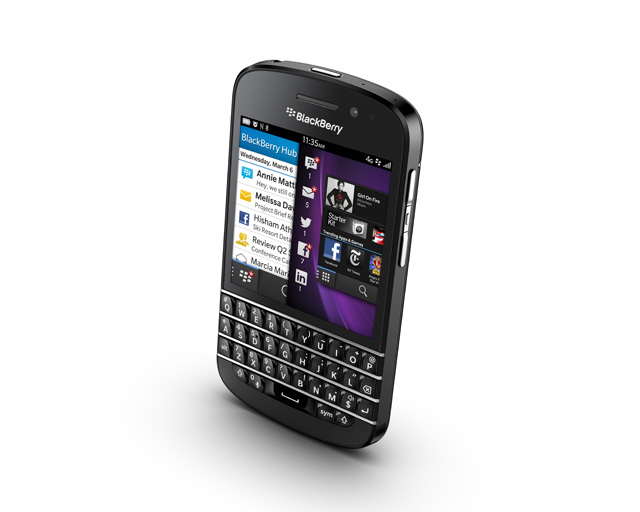




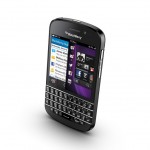

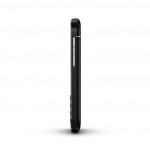
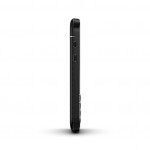
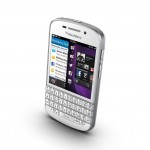

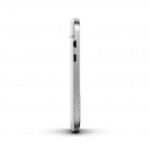
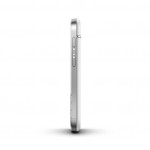
I have a “high profile” user who is *very* angry with the buggyness of this 1st gen device.
His PA is constantly having issues with the current firmware not letting her answer or hang up calls.
So far it’s earning a big Fat F from me, but might graduate up with a better firmware.
You could have more condescending and rude to the blackberry users. Thanks
hi thanks for sharing this information i like yr inforamtion, getting some information Web Application Developers
Comments are closed.